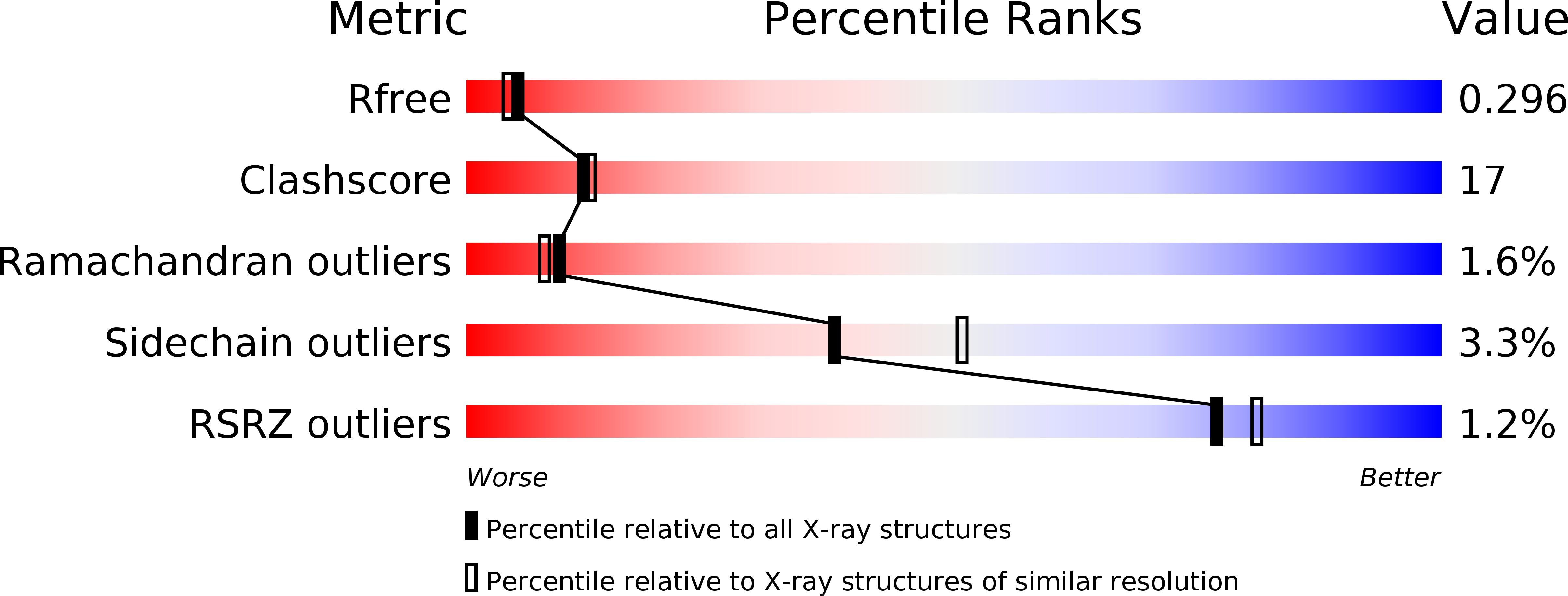Crystal Structure of Octaprenyl Pyrophosphate Synthase from Hyperthermophilic Thermotoga maritima and Mechanism of Product Chain Length Determination
Guo, R.T., Kuo, C.J., Chou, C.C., Ko, T.P., Shr, H.L., Liang, P.H., Wang, A.H.-J.(2004) J Biol Chem 279: 4903-4912
- PubMed: 14617622
- DOI: https://doi.org/10.1074/jbc.M310161200
- Primary Citation of Related Structures:
1V4E, 1V4H, 1V4I, 1V4J, 1V4K - PubMed Abstract:
Octaprenyl pyrophosphate synthase (OPPs) catalyzes consecutive condensation reactions of farnesyl pyrophosphate (FPP) with isopentenyl pyrophosphate (IPP) to generate C40 octaprenyl pyrophosphate (OPP), which constitutes the side chain of bacterial ubiquinone or menaquinone. In this study, the first structure of long chain C40-OPPs from Thermotoga maritima has been determined to 2.28-A resolution. OPPs is composed entirely of alpha-helices joined by connecting loops and is arranged with nine core helices around a large central cavity. An elongated hydrophobic tunnel between D and F alpha-helices contains two DDXXD motifs on the top for substrate binding and is occupied at the bottom with two large residues Phe-52 and Phe-132. The products of the mutant F132A OPPs are predominantly C50, longer than the C40 synthesized by the wild-type and F52A mutant OPPs, suggesting that Phe-132 is the key residue for determining the product chain length. Ala-76 and Ser-77 located close to the FPP binding site and Val-73 positioned further down the tunnel were individually mutated to larger amino acids. A76Y and S77F mainly produce C20 indicating that the mutated large residues in the vicinity of the FPP site limit the substrate chain elongation. Ala-76 is the fifth amino acid upstream from the first DDXXD motif on helix D of OPPs, and its corresponding amino acid in FPPs is Tyr. In contrast, V73Y mutation led to additional accumulation of C30 intermediate. The new structure of the trans-type OPPs, together with the recently determined cis-type UPPs, significantly extends our understanding on the biosynthesis of long chain polyprenyl molecules.
Organizational Affiliation:
Taiwan International Graduate Program, Academia Sinica, Taipei 115, Taiwan.















